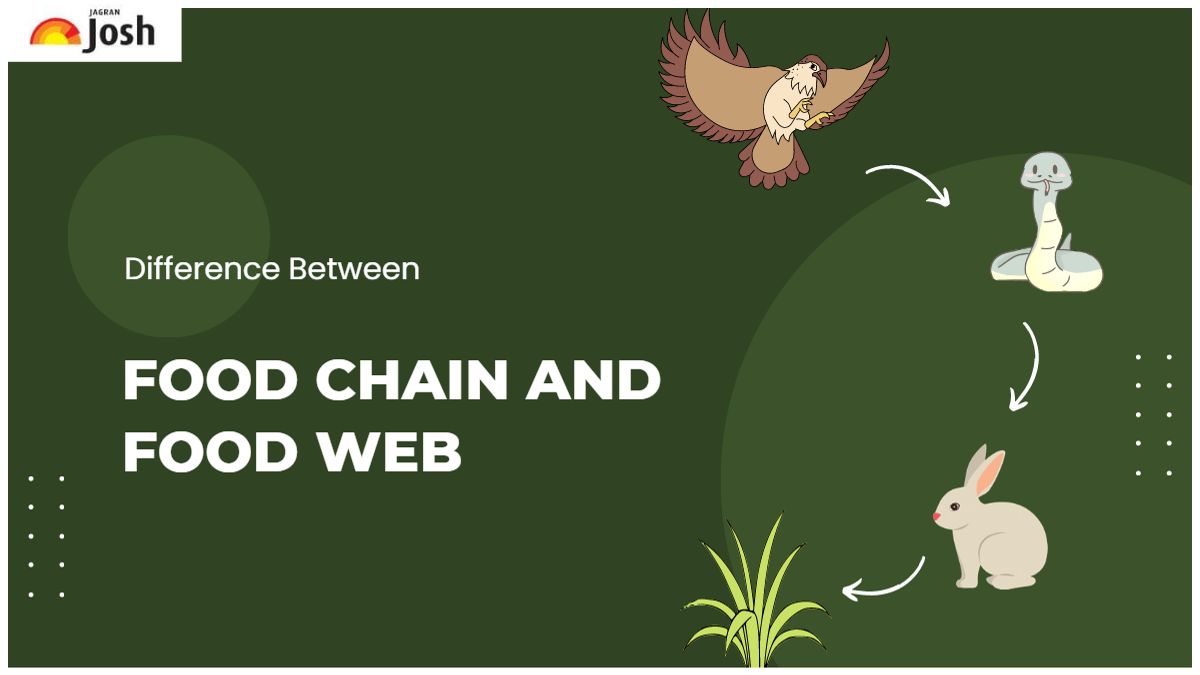Food chains and food webs are important ecological concepts that describe the relationships between species in an ecosystem and how energy is transferred between them. Many people use the two terms interchangeably, but there are many differences between the two. Understanding these concepts is crucial to understanding how ecosystems function and how they can be affected by human activities and other external factors. But before we move on to the differences, let’s start with a definition of the two terms.
What is a food chain?
A food chain is a linear sequence of species in which each species consumes and is consumed by another species.
For example, in a grassland ecosystem, a rabbit consumes a grass plant, which is then consumed by a fox.
This is a simple food chain illustrating the transfer of energy from the herbaceous plant (a producer) to the rabbit (a primary consumer) and then to the fox (a secondary consumer).
Read also | What is the difference between lime and lemon?
What is a food web?
Unlike food chains, food webs are more complex and represent the interconnected relationships between multiple food chains in an ecosystem. A food web shows how different species are connected through the transfer of energy and nutrients.
For example, a grassland food web might include grasses, rabbits, foxes, and other species such as insects, birds, and predators.
Read also | What is the difference between a butterfly and a moth?
These hierarchical classifications are important because they show how energy flows through an ecosystem and how the actions of one species can affect the entire system.
For example, if the population of rabbits in a grassland ecosystem were to decline, the population of foxes that rely on rabbits for food would likely also decline. This, in turn, could affect other species in the ecosystem, such as predators that depend on foxes for food.
Differences between food chain and food web
- One of the main differences between food chains and food webs is that food chains are linear and show a single energy transfer pathway, while food webs are more complex and show multiple interconnected energy transfer pathways.
- Food chains also tend to be more simplified and do not always accurately reflect the complexity of real-world ecosystems.
Read also | What is the difference between bone and cartilage?
- Another difference is that food chains tend to focus on a specific trophic level, or food chain level, while food webs show the relationships between all trophic levels in an ecosystem.
- For example, a food chain might focus on the transfer of energy from producers to primary consumers, while a food web would show the relationships between producers, primary consumers, secondary consumers, etc.
Read also | What is the difference between crocodiles, alligators and gharials?
Difference Between Food Chain and Food Web: Tabular Form
These are the differences between a food chain and a food web presented in table form:
|
food chain |
Food network |
|
It is a linear system that begins with the producers and continues with the first, second and third consumers. Ecosystem species are classified into trophic levels, which indicate a linear flow of food and energy transmission. |
It is the matrix of the food chain, which is connected at many different trophic levels and represents the movement of energy. |
|
It is the relationship between organisms in which one is consumed by its predecessor and then consumed by its successor. |
The term “food web” refers to a network formed when several food chains are connected. |
|
All high trophic level organisms feed on the same type of organism. |
Members of higher trophic levels consume a wide range of organisms. |
|
It consists of approximately 4 to 6 trophic levels. |
It is made up of many trophic levels. |
|
The food chain is a simple and easy process. |
It is a complex process. |
|
Example: grass -> rat -> frog -> snake -> eagle/hawk |
Example: Fruits are consumed by any rodent, which is then eaten by a secondary consumer such as crows, and the secondary consumer is then eaten by a tertiary consumer such as dogs. |
It is important to note that food chains and webs are not static and can change over time due to various factors, such as predator-prey dynamics, migration patterns, and changes in environmental conditions. These changes can have cascading effects throughout the ecosystem, highlighting the interconnectedness of species and the importance of maintaining balance in nature.
Read also | What is the difference between orange and tangerine?
In conclusion, food chains and food webs are important ecological concepts that describe the relationships between species in an ecosystem and how energy is transferred between them. Food chains are linear sequences of species, while food webs are more complex and show the interconnected relationships between multiple food chains. Understanding these concepts can help us better understand ecosystem dynamics.
Read also | What is the difference between plants and trees?
Categories: Optical Illusion
Source: ptivs2.edu.vn
